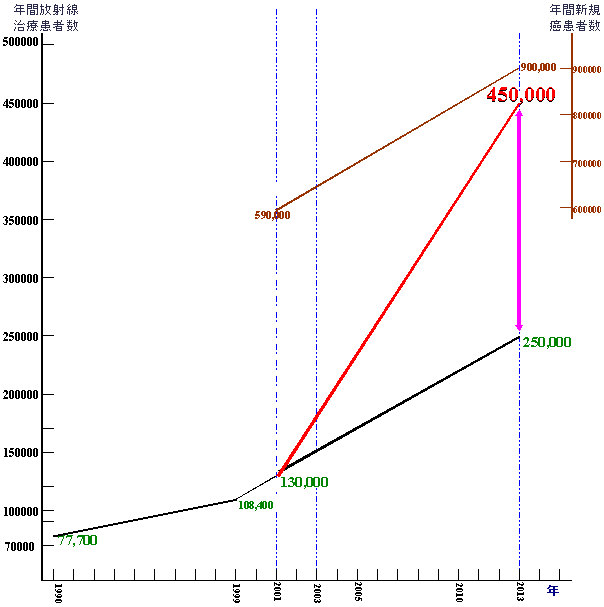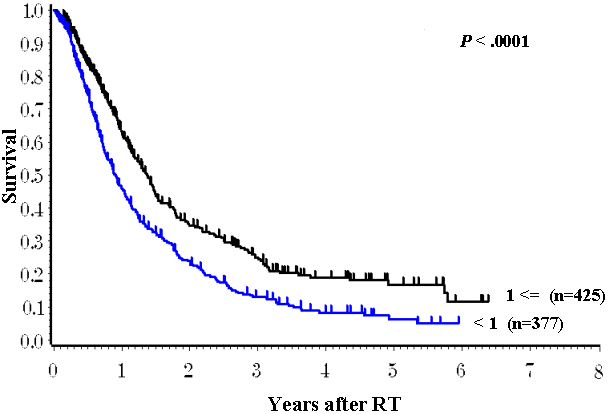
| Japan | United States | ||
| Survey year | 2001 | 2001 | |
| Population (x106) | 126.7* | 280.3* | |
| Facilities | Approx. | 640 | 2,000 |
| No. new patients | Approx. | 134, 000 | 700,000 |
| % of cancer patients | Approx. | 20% | 60% |
| Radiation oncologists | Approx. | 500FTE | 4,000 |
| Physicist | Approx. | 40 | 4,000 |

| Stratification | ||||
| A1 | A2 | B1 | B2 | |
| Linac(Mean) | 1.7 | 1.6 | 1.1 | 0.94 |
| Dual energy (%) | 58 | 62 | 76 | 38 |
| CT simulator (%) | 70 | 50 | 50 | 28 |
| HDR RALS (%) | 71 | 72 | 35 | 20 |
| Radiation Oncologist (FTE Median)* | 2.7 | 1.5 | 0.8 | 0.3 |
| Radiation Therapist (FTE Median) * | 4 | 3 | 2 | 1.3 |
| No. annual patients (Mean) | 630 | 397 | 264 | 101 |
| Patient load/FTE R.O. | 233 | 264 | 330 | 336 |
|

米国及び日本の構造基準(案)より
10年後患者予測設定(3種類)より
|